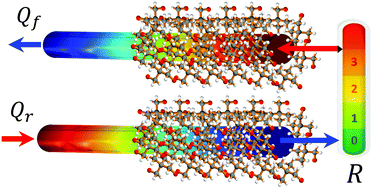A novel enhanced performance thermal rectifier based on NPG functionalized carbon fibers
Abstract
Theoretically, a thermal rectifier is a one-way heat transfer solid state device. If these components become a reality, they will significantly impact on thermal energy recycling and management. In this work, by grafting neopentylglycol (NPG) molecules to carboxylic acid functional groups (–COOH) on the surface of a carbon fiber (CF), a novel two-segmented thermal rectifier has been implemented to efficiently enhance the rectification factor. The device controls the heat by way of the existing first order phase transition in NPG, which triggers rotational molecular reorientations at a prescribed temperature. Thermal measurements of the diode show that the device is able to conduct almost three-fold more heat in the forward bias than in the reverse one. Furthermore, for the restricted class of symmetries established by NPG, and by using anisotropic heat conduction theory in solids, we demonstrate that the experimental (2.95) and predicted (3) rectification factors match quite well. Thereby, such systems possess a significantly enhanced rectification factor which depends on the principal thermal conductivity tensor components present in each phase. Hence, partially functionalized carbon fibers with NPG are newfangled candidate materials which can provide avenues to achieve high performance thermal diodes via surface chemical functionalization.



 Please wait while we load your content...
Please wait while we load your content...